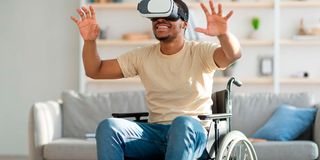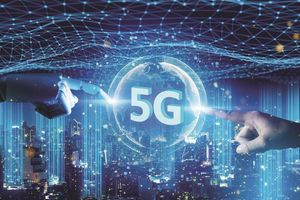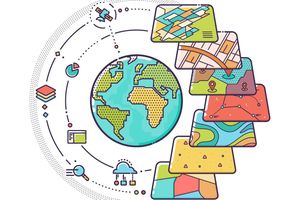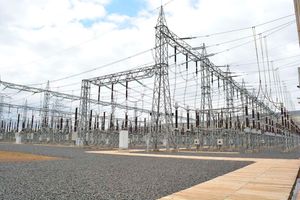Why Kenya needs immersive techs in healthcare this year

Spatial computing refers to technologies that overlay digital information onto the real world, creating immersive and interactive experiences. They include augmented reality, virtual reality and mixed reality.
What you need to know:
- The technology is already being used in Kenya's healthcare system. mHealth Solutions, for instance, uses VR to train nurses on how to manage maternal and child health emergencies through robotic process automation.
- MyEvercare, formerly Doctoora, uses AR to provide remote consultations with doctors and specialists while I-deas Health uses VR to educate patients about chronic diseases like diabetes and HIV/Aids.
Kenya's healthcare system faces numerous challenges, including limited access to specialists, uneven distribution of resources and inadequate infrastructure. However, emerging technologies like spatial computing offer promising solutions to these issues.
Spatial computing refers to technologies that overlay digital information onto the real world, creating immersive and interactive experiences. They include technologies like augmented reality (AR), virtual reality (VR) and mixed reality (MR). Spatial computing involves the use of digital technology to interact with the physical world and holds huge potential to significantly transform healthcare in Kenya in 2024.
The technology is already being used in Kenya's healthcare system. mHealth Solutions, for instance, uses VR to train nurses on how to manage maternal and child health emergencies through robotic process automation. MyEvercare, formerly Doctoora, uses AR to provide remote consultations with doctors and specialists while I-deas Health uses VR to educate patients about chronic diseases like diabetes and HIV/Aids.
But Kenya has the potential to utilise this technology in advancing the country’s healthcare prowess in 2024. The technology can enable the development of wearable devices and sensors that continuously monitor patients' health in real-time. This data can be transmitted to healthcare providers, allowing for remote patient monitoring, particularly beneficial for patients in rural or remote areas with limited access to healthcare facilities.
Spatial computing technologies can enhance telemedicine by creating immersive virtual environments for doctor-patient interactions. This can improve access to healthcare services for individuals in underserved regions, reducing the need for physical travel to healthcare facilities. Additionally, AR-powered wearable devices can monitor patients' vital signs remotely, allowing for early intervention in case of complications.
VR experiences can transport patients to serene virtual environments, helping to manage pain and anxiety during procedures or medical appointments. This can be particularly beneficial for children undergoing dental work or injections. Creating advanced health information systems and data visualisation tools is a critical function of VR. This can help healthcare professionals to analyse and understand health data more effectively, leading to better-informed decisions and improved patient outcomes.
AR-guided exercises can provide patients with real-time feedback and instructions, promoting proper recovery after surgery or injuries. This can lead to faster healing and improved outcomes. VR simulations can provide realistic and immersive environments for surgeons to practise complex procedures before operating on real patients. This can improve surgical skills, reduce risks, and ultimately lead to better patient outcomes.
By integrating geospatial information, healthcare planners can make better-informed decisions about resource allocation, infrastructure development and disease prevention strategies. Mapping tools can help identify areas with higher healthcare needs and facilitate targeted interventions.
In logistics, if well optimised, spatial computing can streamline supply chain management of medical resources. This includes the efficient distribution of medicines, vaccines and medical equipment to different regions based on real-time demand and geographical considerations.
AR and VR can be employed for training healthcare professionals. Medical students can practise surgical procedures, diagnose diseases and learn anatomy in a realistic, 3D environment using AR simulations. This can provide valuable hands-on experience before they enter real-world clinical settings.
Utilising spatial computing for disease surveillance can help in tracking the spread of diseases and predicting potential outbreaks. Real-time data analysis can aid in implementing timely interventions and resource allocation to contain the spread of infectious diseases.
Spatial computing supports the building of community health engagement initiatives. This is by creating interactive and informative applications that educate the public about preventive healthcare measures, disease management and healthy living practices.
These technologies can contribute to the development of smart healthcare infrastructure, including the design of efficient and patient-friendly hospital layouts, wayfinding systems and the integration of IoT devices for improved patient care.
Spatial computing technologies have the potential to improve diagnostic imaging techniques, providing more accurate and detailed information for medical diagnoses. Medical professionals can use AR and VR to visualise patient data such as CT (Computed Tomography) scans and MRIs (Magnetic Resonance Imaging), in 3D, allowing for better diagnosis and treatment planning.
However, a few glitches lie ahead. AR and VR technologies can be expensive, making them less accessible in resource-constrained settings. This makes it crucial for Kenya to develop low-cost but high quality locally adapted solutions.
While Kenya has a relatively good internet penetration rate, some regions where emergency healthcare is needed are still cut out of 4G internet networks that support immersive tech. Reliable internet access and computing power remain essential for using AR and VR effectively and investments in infrastructure and digital literacy are necessary.
In a world dominated by ethical tech, data privacy and security concerns need to be addressed when using AR and VR in healthcare. Clear guidelines and regulations will be essential in safeguarding patient data.
Despite the challenges, the potential of spatial tech to transform Kenya's healthcare system is undeniable. With more research, development and pilot projects that address accessibility, infrastructure, and ethical concerns, Kenya can leverage this technology to improve healthcare access, quality, and affordability for all its citizens.
The author is a global futurism journalist at Quartz. [email protected]





